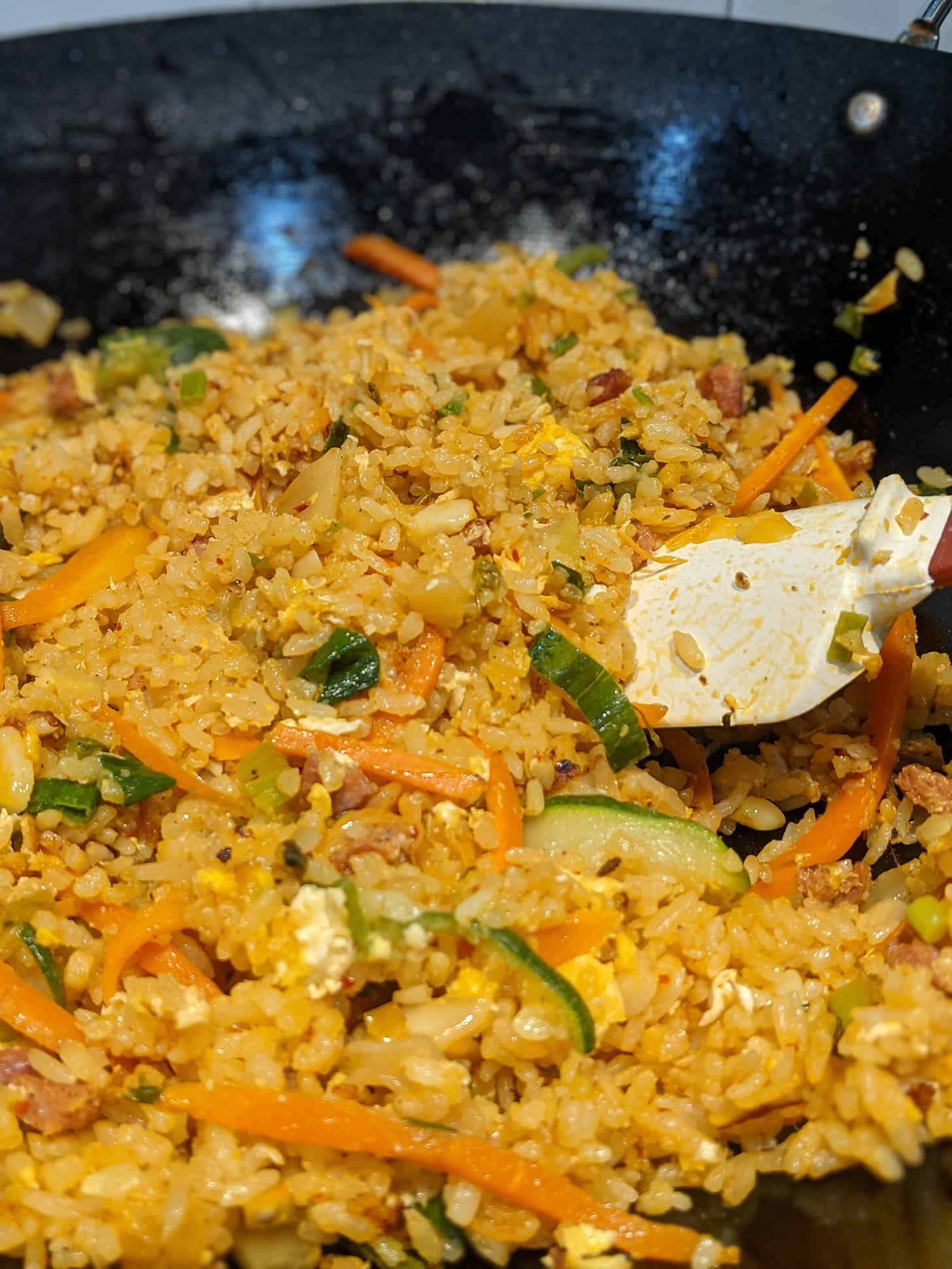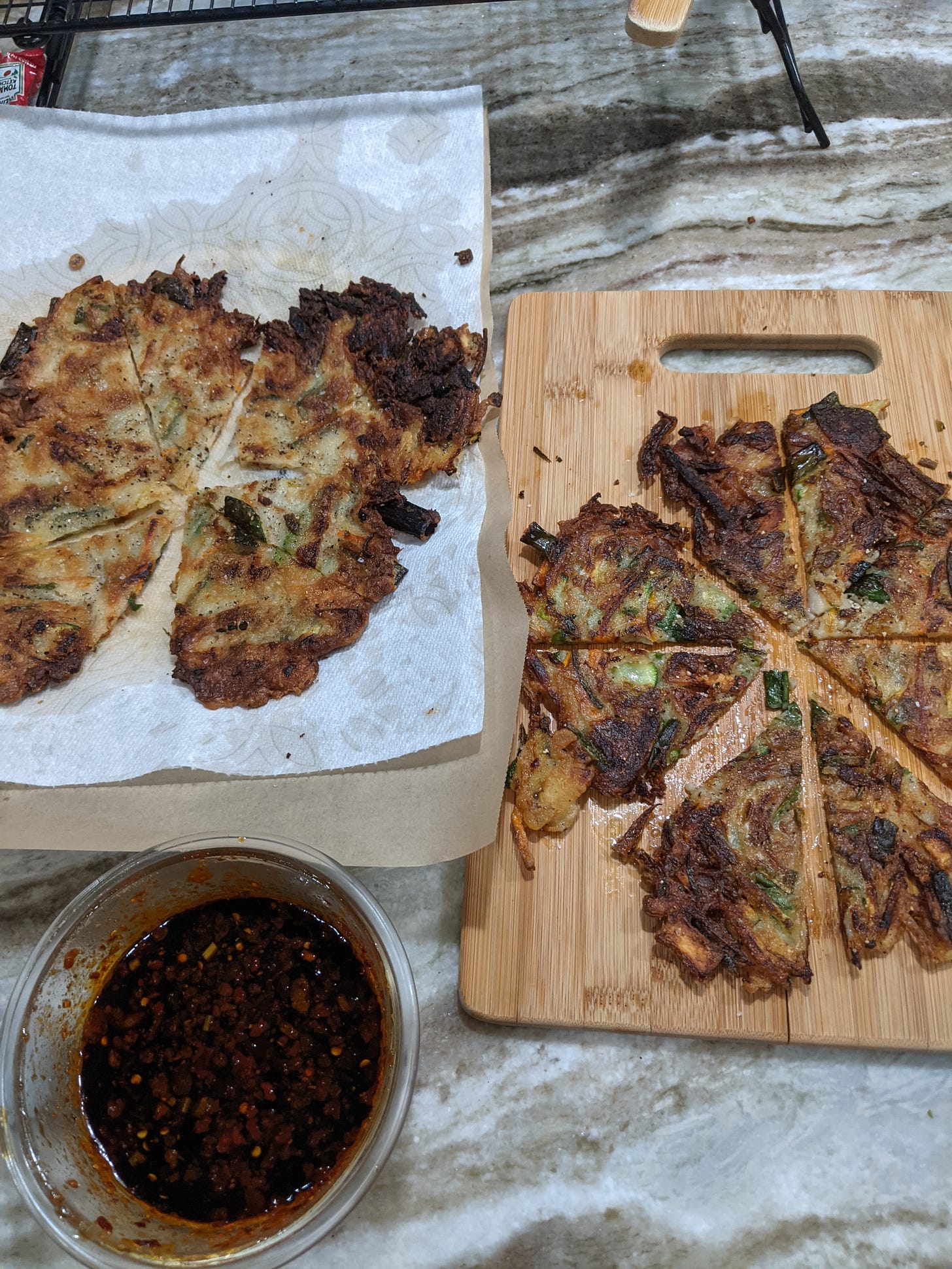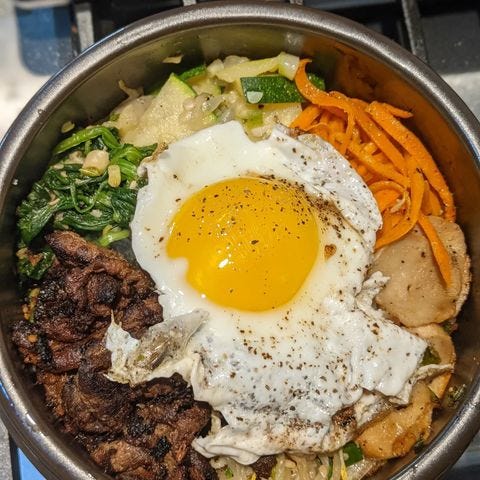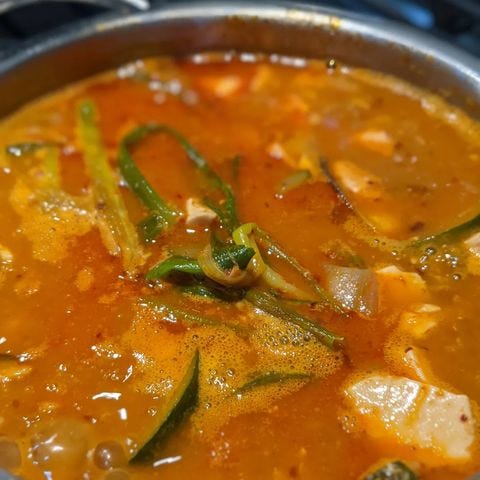Namul: Perfect for Korean BBQ, Gimbap, Bibimbap, and Fried Rice
Leftovers get a banchan (side dish) makeover
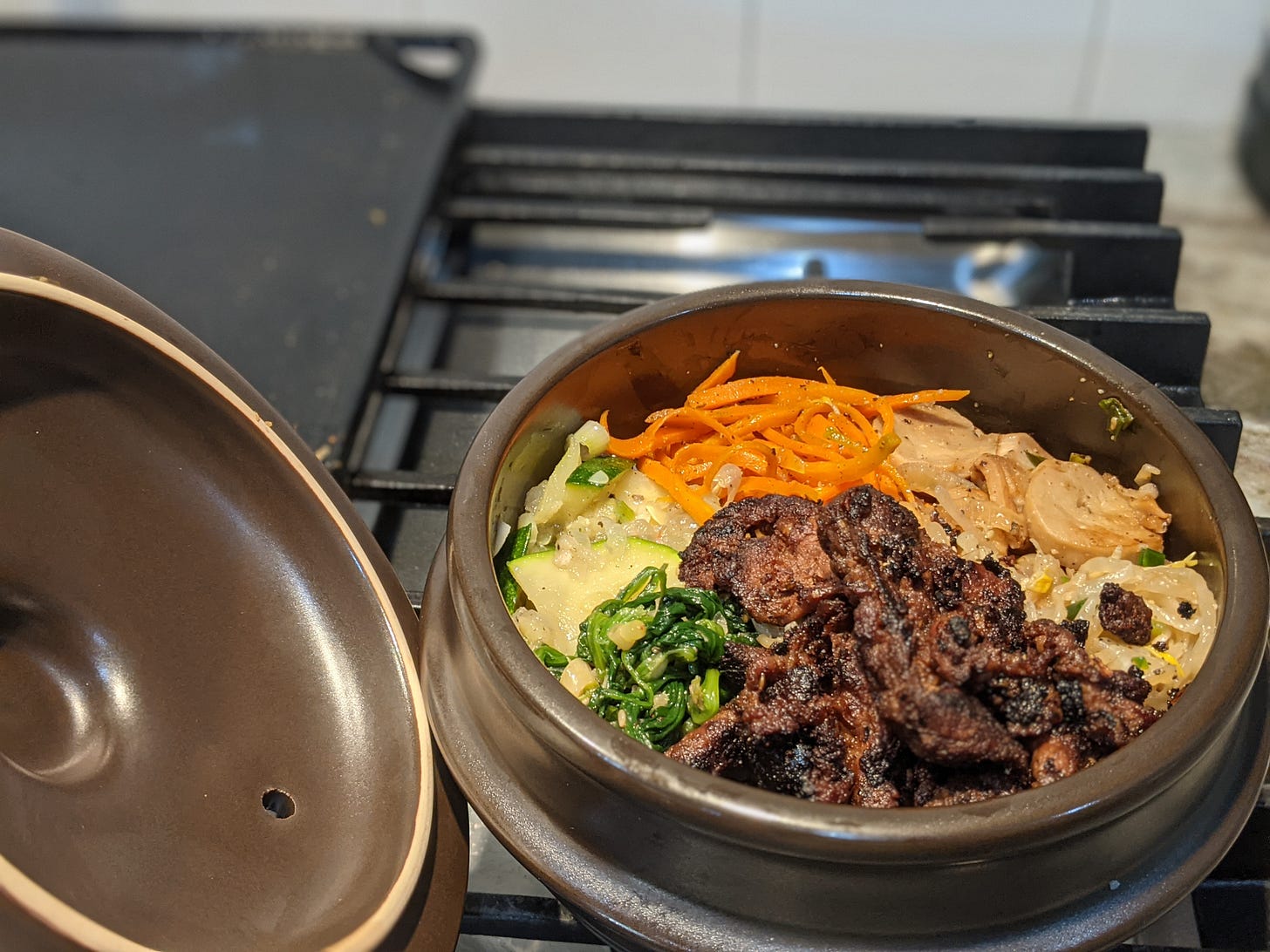
Believe it or not, most of the popular Korean food you see on social media came from humble origins, making the most of leftovers. It’s like that for every ethnic group.
If you’re stuck in a small town whose greatest claim to culinary fame is a plate of greasy steak fingers, you can still make Korean food at home, easy. I’m just beginning to learn how myself, 59 years later.
Last week, I made a really spicy, flavorful (still needs more) soondubu jjigae (tofu stew) from scraps of frozen mussels, Argentinian shrimp, half a Dungeness crab, King Oyster mushroom, and one or two slices of kim chee.
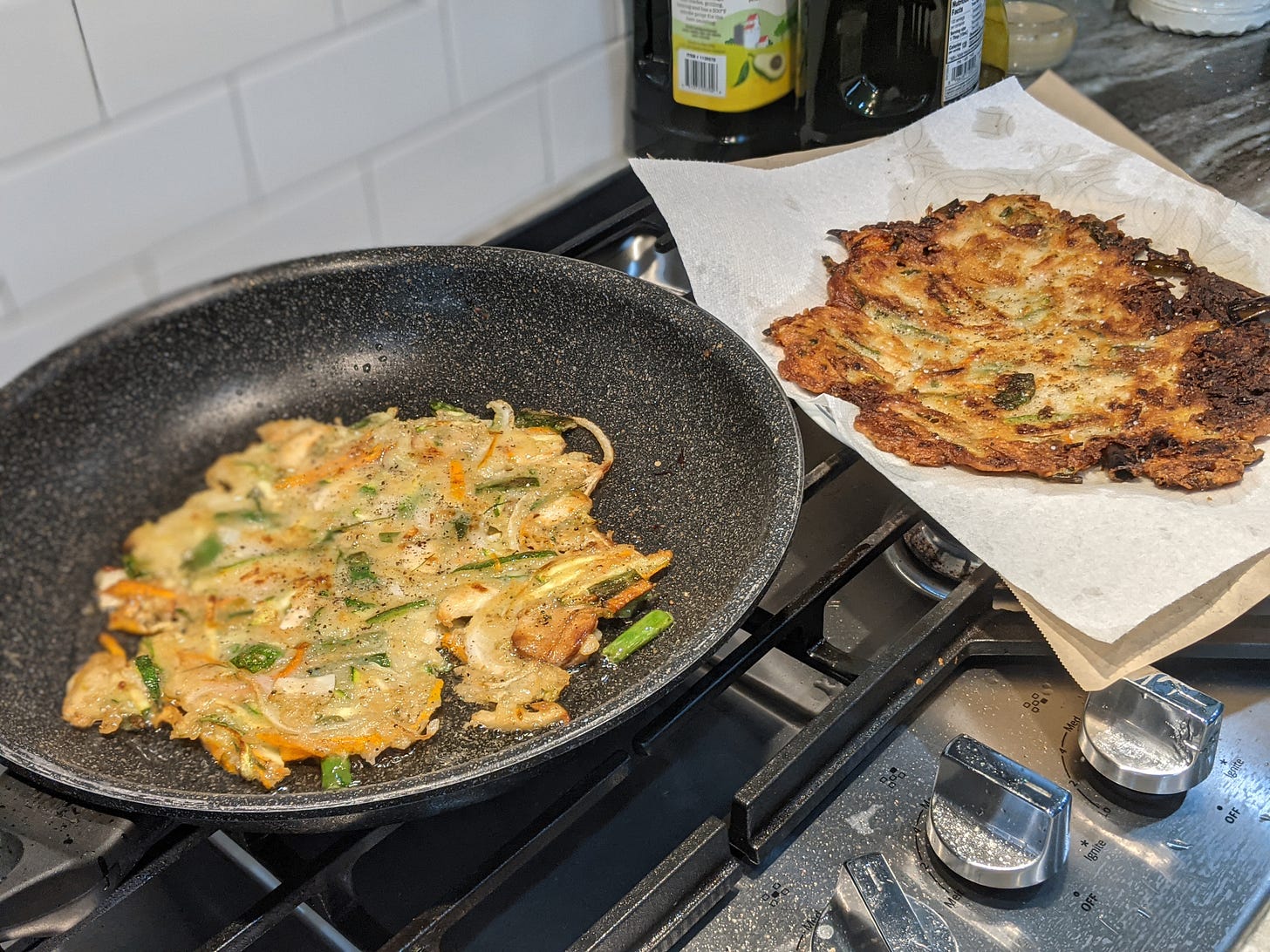
Yesterday, I burned my hand flipping jeok (savory fritter), using leftover vegetable namul I made to go with my husband’s amazing bulgogi (marinated bbq beef) from last week.
In a few days, I’ll try again with hotteok (“barbarian’s rice cake,” a Korean street snack of sweet, filled pancakes inspired by the Chinese version, tang bing, from the 1920s), for Bible study night.
The namul is easier to throw together than you think. No need for fancy gadgets or exotic ingredients. Even if you only have salt on hand, you’ve got namul. The one crucial, supermarket ingredient to Korean namul in banchan (side dishes) is sesame oil. Without it, you don’t have Korean food.
Logic, simplicity, and a little creativity make for delicious Korean side dishes, usually served cold and in a variety of ways. If you’re sick of kal bi (marinated bbq ribs) or bulgogi, mix up the variety and extend the pleasure with these options:
gimbap/kimbap (rice roll): throw a quick egg omelette and some chopped kim chee in there, and you have a convenient on-the-go snack — not to be confused with sushi. While I still suck at rolling them out without the nori (seaweed sheets) falling apart), I’m sure you’ll be better at it. You don’t technically need a bamboo mat. Just don’t overload it. Psst…I may or may not try to make some tomorrow.
bibimbap: basically Korea’s version of a rice or Buddha bowl, it’s a great way to use up leftovers, including all that banchan lying around in the fridge. If you have a *dolsot (heat-friendly stone bowl), layer in some cooked rice on the bottom, then fan out pie slices of spinach, bean sprouts, carrots, cucumbers, mushrooms, and the meat of your choice (tofu, beef, chicken, salmon). I tend to leave out the raw egg (if you put a lid on it, it’ll cook by the time you transfer the stone bowl to the dining room table) and gochujang (chile paste), because I was raised on pizza and burgers and I kind of don’t really like bibimbap all that much compared to you, Gen Zer. *Dolsot can also be used in making single-serving jjigae (stew).
bokkeumbap: This one’s a no-brainer, no? Again, as long as you have sesame oil, that’s what distinguishes Korean fried rice from Japanese, Chinese, or Taiwanese versions. Mom would pan-fry all the namul she liked, minus kim chee, with soy sauce, that’s it.
jeon: I always thought these were savory pancakes, and they are. But they’re more accurately flat fritters studded with leftover veggies and meat. A favorite is seafood made from frozen seafood medley. Too lazy to prep and chop and slice? Namul. Also…scallion jeon; requires minimal chopping. Cut in half or in one inch pieces.
mandoo: Fun fact, I hated these steamed dumplings growing up. Now, I’m all about ‘em. Besides, people fry/steam them now like gyoza. Namul filling halves the prep time. Bulgogi mandoo? Yummm.
Namul: Spinach, Mung Bean Sprouts, King Oyster Mushrooms, Carrots, Zucchini, Cucumber
Note: Recipes for spinach and bean sprouts in their photo captions.

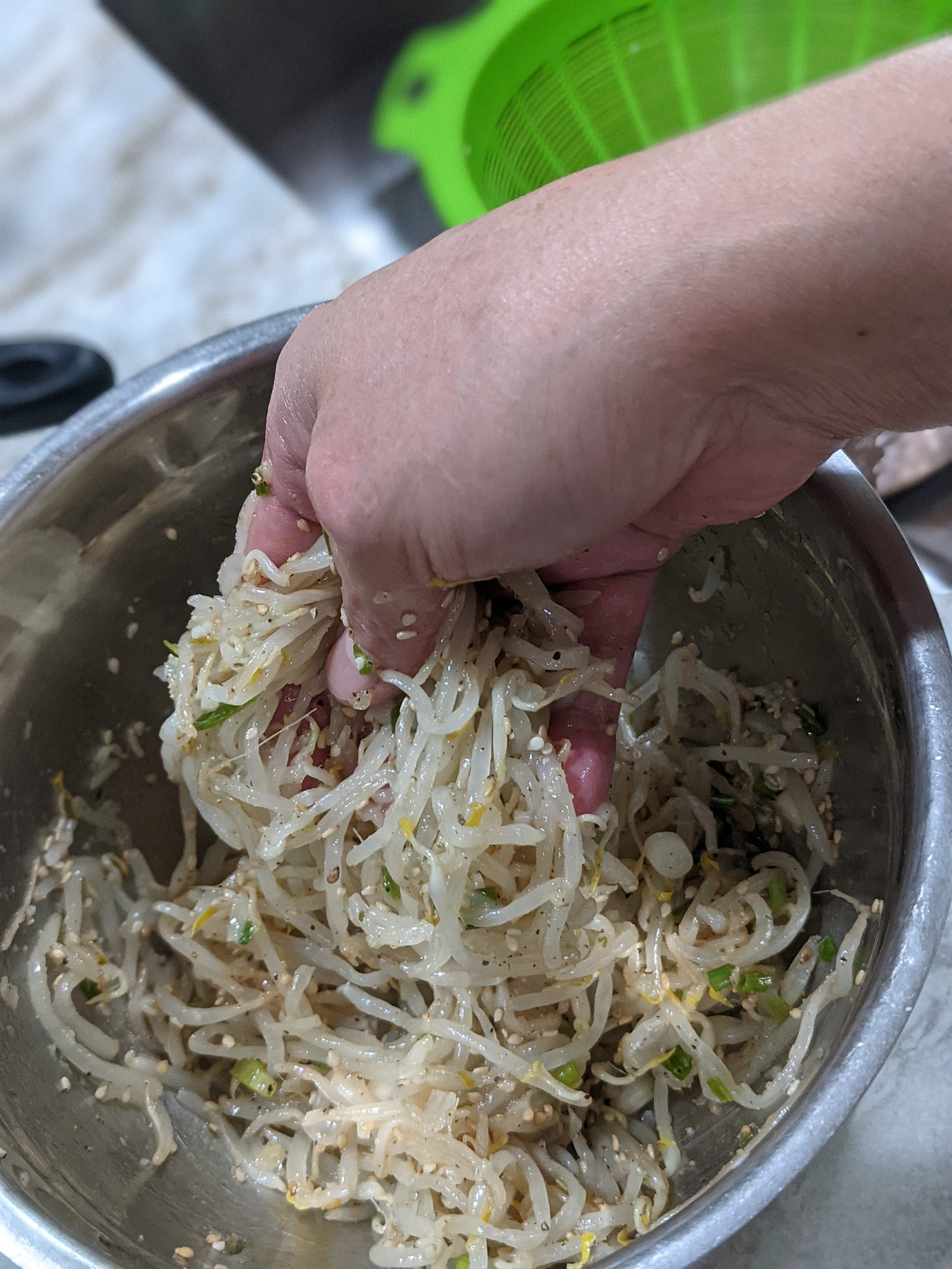
The zucchini/squash namul is prepared pretty much the same as the bean sprouts and spinach, except for the addition of salted shrimp. You can find this in any decent Asian market or even via Amazon (it’s okay to eat, even if it’s been shipped without dry ice…I did and I’m still alive). Salted shrimp (saeujeot) is essential for squash namul and jjigae.
Still need a recipe? Try Korean Bapsang’s Hobak Bokkeum.
For the mushrooms (sliced) and carrots (matchsticks), fry in olive oil or butter, or both, with some salt, black pepper, garlic powder, and…you guessed it…sesame oil.
I can live without cucumber namul (both the kim chee and the sour vinegary kind). But if you can’t, here’s a good recipe to follow from My Korean Kitchen, or this one from kimchimari.
Remember, if you don’t have or can’t find an ingredient in a recipe, improvise. That’s what poor Koreans like my grandmother and mom did back in the day, and their food tasted head and shoulders above anything some famous YouTuber could dream up.
Salt works wonders, too.





